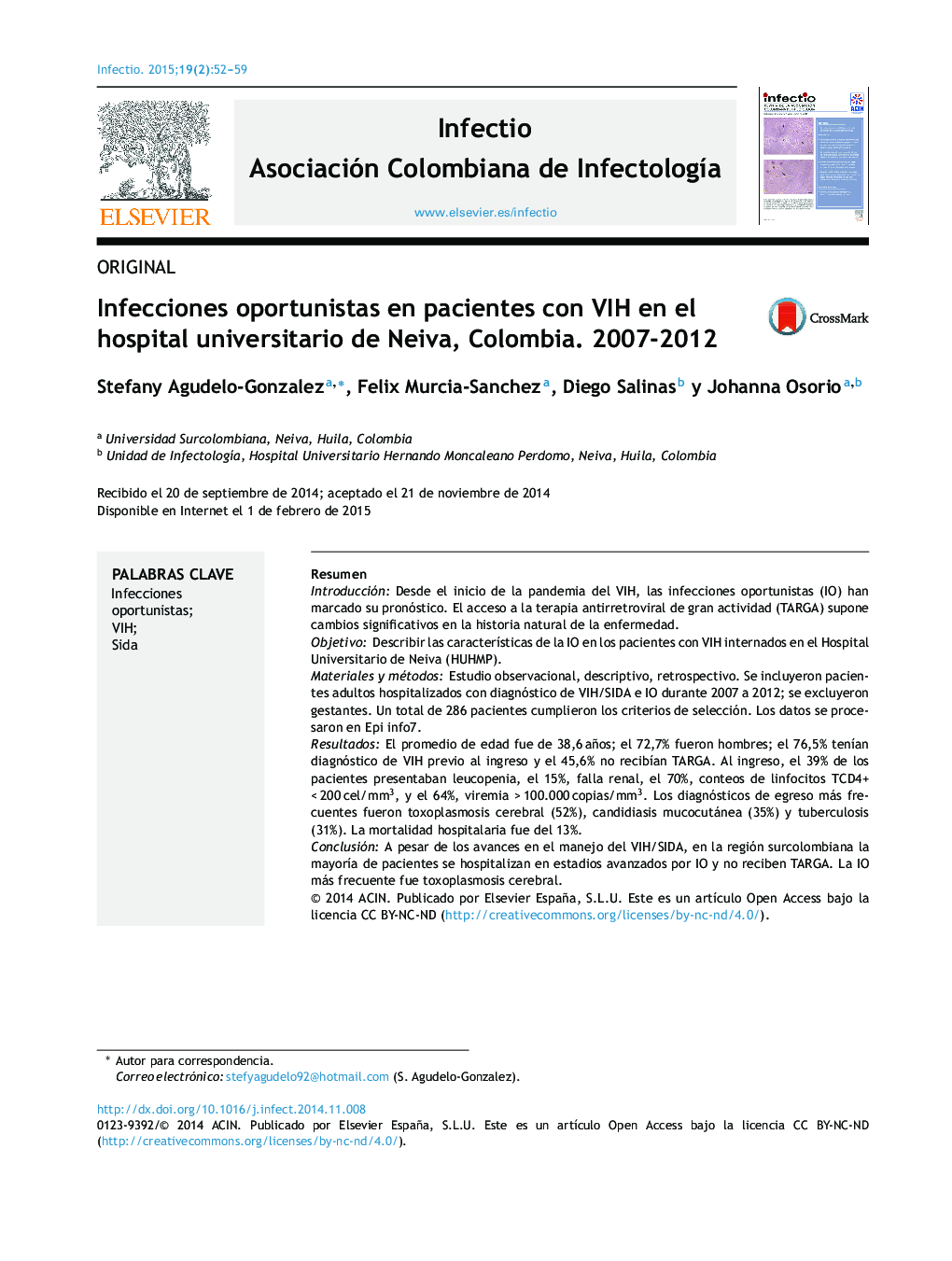| Article ID | Journal | Published Year | Pages | File Type |
|---|---|---|---|---|
| 3403663 | Infectio | 2015 | 8 Pages |
ResumenIntroducciónDesde el inicio de la pandemia del VIH, las infecciones oportunistas (IO) han marcado su pronóstico. El acceso a la terapia antirretroviral de gran actividad (TARGA) supone cambios significativos en la historia natural de la enfermedad.ObjetivoDescribir las características de la IO en los pacientes con VIH internados en el Hospital Universitario de Neiva (HUHMP).Materiales y métodosEstudio observacional, descriptivo, retrospectivo. Se incluyeron pacientes adultos hospitalizados con diagnóstico de VIH/SIDA e IO durante 2007 a 2012; se excluyeron gestantes. Un total de 286 pacientes cumplieron los criterios de selección. Los datos se procesaron en Epi info7.ResultadosEl promedio de edad fue de 38,6 años; el 72,7% fueron hombres; el 76,5% tenían diagnóstico de VIH previo al ingreso y el 45,6% no recibían TARGA. Al ingreso, el 39% de los pacientes presentaban leucopenia, el 15%, falla renal, el 70%, conteos de linfocitos TCD4+ < 200 cel/mm3, y el 64%, viremia > 100.000 copias/mm3. Los diagnósticos de egreso más frecuentes fueron toxoplasmosis cerebral (52%), candidiasis mucocutánea (35%) y tuberculosis (31%). La mortalidad hospitalaria fue del 13%.ConclusiónA pesar de los avances en el manejo del VIH/SIDA, en la región surcolombiana la mayoría de pacientes se hospitalizan en estadios avanzados por IO y no reciben TARGA. La IO más frecuente fue toxoplasmosis cerebral.
IntroductionSince the beginning of the HIV pandemic, opportunistic infections (OI) have determined the prognosis. Access to antiretroviral therapy (HAART) led to significant changes in the natural history of the disease.ObjectiveTo describe the clinical characteristics of patients with HIV and OIs admitted to the Universitary Hospital of Neiva (HUHMP).Materials and methodsAn observational, descriptive, retrospective study of hospitalized adults with HIV/AIDS admitted due to OIs during 2007-2012; pregnant women were excluded. The data were processed using Epi info7.ResultsA total of 286 patients met the selection criteria. The mean age was 38.6 years and 72.7% were men. 76.5% were diagnosed with HIV prior to entry, 45.6% were not receiving HAART. On admission 39% of patients had leukopenia, 15% renal failure, 70% CD4 + lymphocyte counts < 200 cells/mm3 and 64% viremia > 100,000 copies/mm3. The most common discharge diagnoses were cerebral toxoplasmosis (52%), mucocutaneous candidiasis (35%) and tuberculosis (31%). Hospital mortality was 13%.ConclusionDespite improvement in the management of HIV/AIDS in the southwestern region of Colombia, most HIV patients are hospitalized at advanced HIV-stages due to OIs, and are not receiving HAART. The most common OI was cerebral toxoplasmosis.
